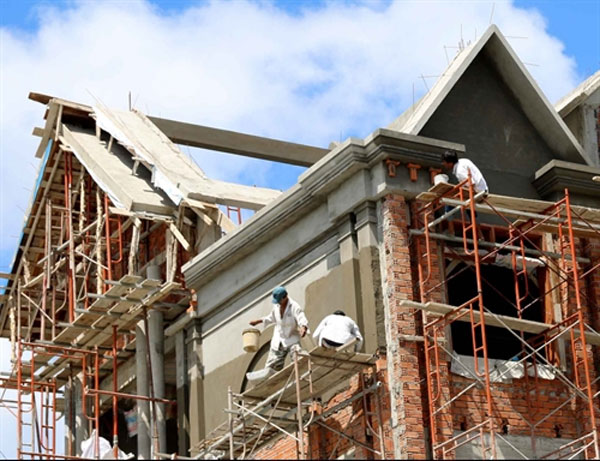VietNamNet Bridge – An alarming increase in the number of labour related accidents since the beginning of this year has emphasised the importance of improving awareness of the responsibility of employers, employees and the public about labour safety.

|
|
Workers at a construction site without safety equipment, despite working high above the ground. The construction industry has seen the highest number of labour accidents in recent years. – VNA/VNS Photo Kim Ha
|
On January 1, a serious accident at a lime kiln owned by the family of Le Van Thong, 56, in Nong Cong District’s Hoang Giang Commune, in the northern province of Thanh Hoa left eight people dead. Following the accident, the province decided to shut down around 200 manual lime kilns by 2020.
Just one week later, four construction workers were killed when scaffolding for a bridge collapsed in the province.
Earlier this month, two accidents occurred in Dong Nai and Nghe An provinces, each leaving a fatality. In each case, a worker died after falling from 10m high scaffolding.
As many as 7,620 work related accidents were reported last year, resulting in 7,785 injuries, of which 666 resulted in death, according to the Labour Safety Department under the Ministry of Labour, Invalids and Social Affairs (MoLISA).
The number of accidents and fatalities last year increased by 13.6 per cent and 6.2 per cent, respectively, compared with figures from 2014.
Ha Tat Thang, director of the Labour Safety Department, pointed to a low awareness of labour safety regulations, as well as a shortage of state labour safety staff and inadequate punishments for violations as the main causes of accidents.
Out of 629 cases of work related accidents leading to fatalities, only five cases were referred to the People’s Procuracy for prosecution. Only one case – relating to a scaffold collapse at the Formosa-Ha Tinh steel-making complex where 13 people died – was sent to trial.
“Due to inadequate punishment of violations, entrepreneurs are still indifferent to occupational safety,” Thang was quoted by Tin Tuc (News) newspaper as saying.
Nguyen Anh Tho, deputy director of MoLISA’s Department of Labour Safety, said the real number of labour accidents is actually higher, because many enterprises, especially small and medium enterprises, negotiated with relatives of the victims on compensation instead of reporting accidents to the local authorities.
Tho also blamed low labour safety compliance by enterprises for the shortage of specialized inspectors. Only 30 per cent of labour inspections received training in labour safety, he said.
Thang said the statistics on work related accidents would come closer to the real number of accidents in the future. The new Law on Labour Safety, which takes effect in July, requires enterprises to report the number of work-related accidents, he said. Otherwise, they would be subject to pay an administrative fine.
Last year, MoLISA received only 238 investigative reports of accidents, less than a half the number of accidents that involved a fatality, Thang said.
Le Van Trinh, deputy chairman of the Labour Safety Science and Technology Association, said many labourers were not given proper work safety training or safety equipment.
To ensure the Law on Labour Safety and Hygiene was effective, he proposed that the competent agencies monitor training and deal strictly with violators.
The National Week on Labour Safety and Hygiene - Fire and Explosion Prevention will be held on March 20-26, with the launching ceremony to be held in the northern province of Hung Yen on March 20.
The event aims to call on all businesses, localities and labourers, by using practical activities, to actively observe the Law on Labour Safety and Hygiene when it comes into effect from July 1 this year.
Along with organising the campaign, MoLISA urges ministries, localities and sectors to strengthen their monitoring and supervision of the implementation of labour safety and hygiene at enterprises, particularly those operating in high-risk fields such as construction, mining, chemicals and electricity.
| related news |
VNS